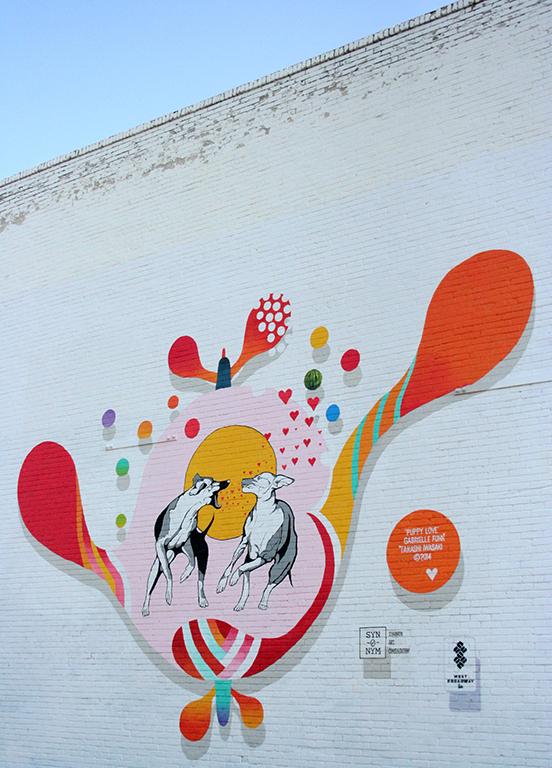A new arts centre in Winnipeg’s North End hopes to improve the lives of that community’s members.
The Selkirk Avenue North End Arts Centre (NEAC) offers drop-in art programs hosted by professional artists for area youth. It is a joint venture between the Winnipeg Arts Council and Ndinawe, a North End community organization which runs a safe house and drop-in centre for youth. It opened this April as part of the Winnipeg Cultural Capital of Canada program, but Alix Sobler of the Winnipeg Arts Council says that community organizers had expressed a desire for such an establishment earlier.
“There was already a small arts program at Ndinawe [and] we approached them about growing it,” she said. “They were very enthusiastic, as this was an opportunity for them to create a much larger resource and the idea was very popular among their youth.”
The new centre was established with funding from the federal government through the Cultural Capital program, Winnipeg’s municipal government, the Winnipeg Foundation and corporate sponsors such as Great West Life and the Assiniboine Credit Union.
Prior to the establishment of the NEAC, Ndinawe had its own artistic programming for its local youth. This made Ndinawe the ideal partner for the Winnipeg Arts Council in founding the new centre. In fact, the NEAC currently operates out of the Ndinawe building, though Art Program Coordinator Niki Little hopes to move to the centre’s permanent home later this month.
“The new building will enable us to enhance our current programming with new video and music studios as well as a large space that can be recreated to suit a variety of workshops, exhibitions, performances, screenings and events.”
The funding for the NEAC allowed organizers to recruit nationally and internationally renowned Canadian artists as youth mentors, as well as to offer more hours of operation than the arts program at Ndinawe did. Artists who have participated in the program so far include filmmakers Caroline Monnet and Mike Maryniuk as well as photographer Keesic Douglas. Already, these artists have had success in reaching the community.
“The youth have found them approachable, receptive and their workshops interesting,” said Little. This may be in part thanks to their previous experience; Little points out that “for the most part, the artists have previous experience working along side with community and youth in this type of environment.”
Artists typically spend a week working with area youth on their project, but the centre also has an artist-in-residence program, wherein artists stay for closer to three months. The current artist-in-residence is Jordan Bennett from Corner Brook, NL.
The NEAC hopes to share some of the success of Art City, the West-Broadway organization founded by Winnipeg artist Wanda Koop in 1998. With this goal in mind, Art City staff have been enlisted to help run the new centre until it is better established. Like the NEAC, Art City employs professional and amateur artists to lead members of the community in collaborative and individual art projects. The projects at Art City also usually have weekly cycles but attendance is drop-in based, so patrons can attend whenever it is convenient.
While it is difficult to measure the success of such an endeavour, the drastic growth in attendance and volunteering at Art City suggests it is making progress, and there is anecdotal evidence to suggest that lives have been improved through Art City’s programs. Founder Wanda Koop’s words are displayed on the organization’s literature and outline its philosophy: “We are not necessarily making artists. We are giving people the opportunity to think creatively, and my feeling is that if you can think creatively, you can survive almost anything.”
Still, success on the scale of Art City’s is not easily achieved. Cam Forbes, executive director of Art City, said that funding for ongoing programs is harder to get than funding for new projects or centres. The funding provided by the Cultural Capital program and the local sponsors will sustain the NEAC for the present, but finding ongoing funding will be difficult. Coordinator Little is well aware of this challenge. “Project based initiatives are available but those come with expiry dates after one or four years, making sustainability a real concern,” she explained.
Little said that the difficulty of finding long-term funding is exacerbated by the fact that the centre is not technically “artist-run.”
“In the public sector there are no readily accessible funding opportunities dedicated for community arts organizations so we find ourselves in funding limbo,” she said. “We do not fit within the definition of an artist-run centre even though our programming supports artists in a different capacity.”



